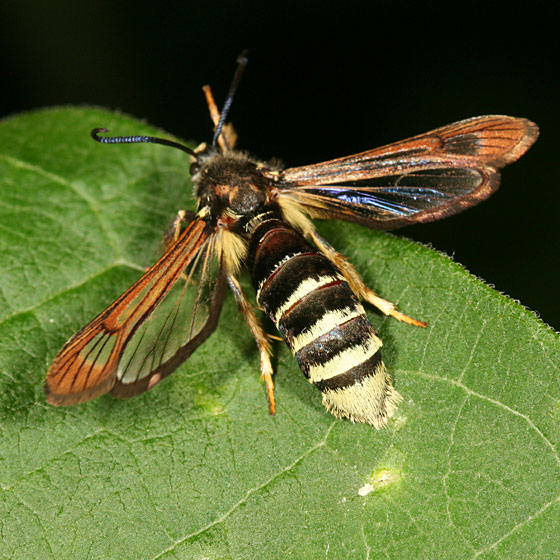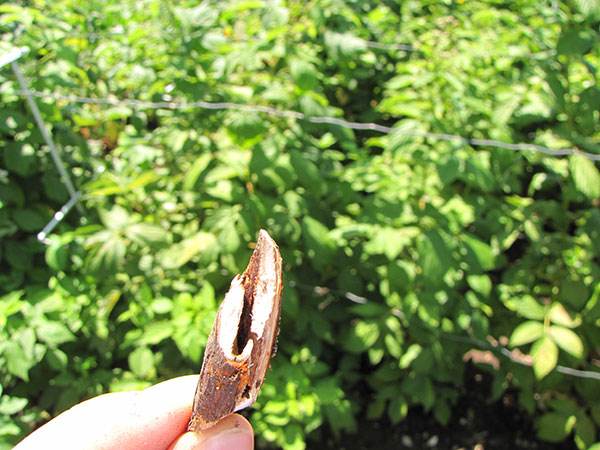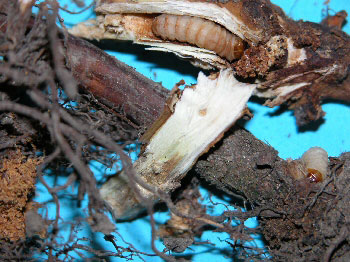Raspberry Crown Borer
 Adult Female Raspberry Crown Borer
Adult Female Raspberry Crown Borer

Raspberry plant crowns damaged by raspberry crown borer larval tunneling.

Larva and its tunnel in a raspberry plant crown.

Wilted raspberry canes from raspberry crown borer injury to plant crown and roots.
HOSTS
- Black Raspberry
- Blackberry
- Boysenberry
- Loganberry
- Red Raspberry
- Salmonberry
- Thimbleberry
DESCRIPTION
The raspberry crown borer (Pennisetia marginata) is a stout-bodied clear-winged moth that resembles a yellow jacket wasp. It is a common cane-boring insect pest of raspberry in northern Utah. Although its host range includes all brambles in the genus Rubus, it is only known to cause damage to raspberry in Utah. Larvae tunnel in the lower cane, crown, and upper roots of raspberry, causing entire canes to wilt and break off at the crown. Raspberry crown borer infestations are usually not severe, but populations build up slowly over several years, reducing vigor and yeild of plantings.
BIOLOGY
Adults are moths with banded black and yellow bodies and transparent forewings witth brown borders.
Eggs are 1/16 inch, reddish brown, and laid individually on the underside of plant leaves near the margins.
Larva are white with a dark head and are 1/4 to 1 1/4 inch long. They tunnel in the crown and upper roots.
Pupa are reddish brown and 3/4 to 1 inch long.
SYMPTOMS
- Wilting and dying of foliage on canes
- Heavily damaged canes become spindly and break off at the crown
- Holes in the crown and upper roots containing sawdust-like frass
- Reduced plant growth and vigor from larvae tunneling in crowns and upper roots
GENERAL MANAGEMENT
Dig out and burn infested canes and crowns in the late summer and fall. Remove alternate hosts, such as wild blackberry, from the area.
Click Here for insecticide information.
Biological Control: Several natural enemies have been documented attacking raspberry crown borer. An unidentified eulopid wasp was recovered from crown borer eggs in Arkansas (McKern et al. 2007). An ichnemonid wasp, Pterocormus chasmodops (Heinrich), was found emerging from pupae in Washington (Pavuk and Williams 1988).

